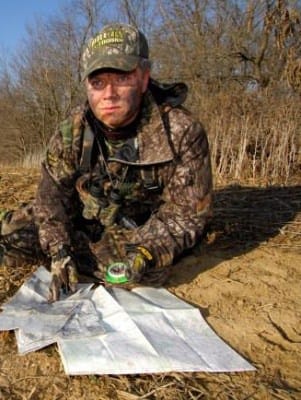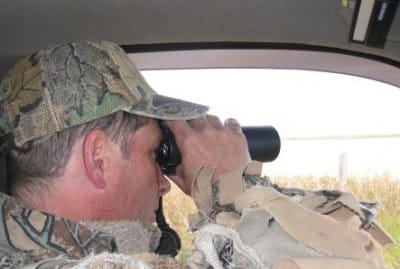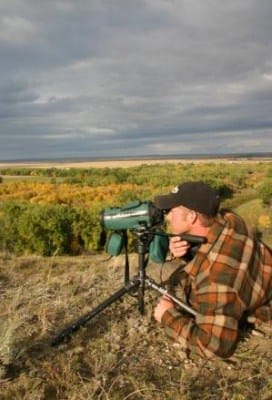Submitted By:
Mike Hanback – USA Guest Author
 ]
]
You can go out and glass fields and look for deer tracks and stuff like you always have (yawn, boring). Or, you can think out of the box to find a huge buck to hunt in a few weeks (okay, perk up now and read on).
Take a Hike
Say you hunt a 400-acre block of woods, or maybe even a huge public area. You probably only hunt 100 of those acres, or maybe even just 50 of 75. You figure other people roam the ridges and hollows beyond your stand, so you stay put. Plus, you’ve likely gotten comfy and a bit lazy. You bust a buck in your old, familiar spot every once in a while, so you stick with it.
Well, get out of your rut and hike every yard of your property (well, most of it anyhow). Break the woods into 20- or 30-acre grids. Hike the perimeters of each grid first and work your way into the centers. It might take several days or even weeks, but it is fun and you’ll learn a lot. Carry aerial photo and topo maps, and jot down your discoveries-a fence gap where two trails converge, a bluff that deer walk around, an oak grove heavy with nuts that will fall in bow season… you get the idea.
Look close for thick, out-of-the-way holes where bucks will hide when the guns start booming this fall. It doesn’t take much cover to hold a monster. Come back in a few months, hang a stand and watch one of the new spots. You might bust a giant.
Sign-wise, big early-fall rubs should rev your motor. One September day, I decided to scout a draw a half-mile from a stand that I had been hunting for 10 years. That drainage had always looked good, but I had been too lazy to check it. I didn’t hike far before I found 10 rubs the size of fence posts, plus lots of fresh tracks and smaller rubs. I marked a good tree and hung a stand in it a week later. A month later I nailed a 140-incher in the new spot.
By the way, I have never seen another hunter in or near that draw. That is generally the case. You figure people are hunting all the other good spots, but they’re often not.
Take a Spin
It’s easy to get so wrapped up in scouting your spot that you neglect the adjacent properties. That’s a mistake because what happens across the fences dictates 50 percent or more of the deer movements in your area.

Go drive the perimeters of your hunt zone one day. So what if you can’t hunt over there-it never hurts to look! Glass for ridges, draws, creeks and fences that will funnel bucks onto your spot. Travel corridors that lead to and from crop fields should really catch your eye.
BIG TIP: A week or two before hunting season, scout the best-looking funnels that run onto your side of the fence. If you find a ton of fresh sign 200 yards or more inside your property line, hang a stand and shoot a buck that five minutes ago might have been entirely off your property.
Morning Scout
Most hunters glass for bucks around food sources on late-summer evenings, but they sleep in on Saturdays and Sundays. Don’t!

Roll out of the sack, grab a cup of Joe and go watch for solid 8-pointers moving in a foggy power cut, crossing across a weed field, skulking toward a swamp… Pattern a shooter moving from feed and back to his bedding area and you might do something few others do-shoot a whopper buck on a morning hunt early in the season. Good luck!
Check out Hanback’s BIG DEER Blog at mikehanback.com.



